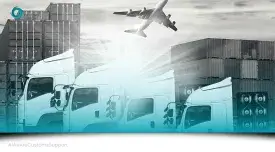The main difference with Delivery at Place (DAP) is that the seller takes care of the import formalities and transportation to the final destination. The destination needs to be specifically named.
DDP: Associated Risks & Costs
Risks and Costs for the Seller
The seller is responsible for arranging and paying for transportation to the final destination of the goods. The seller is also responsible for paying any tariffs and taxes when importing the goods into the buyer’s country. Risk transfers at the moment of unloading, for which the Buyer is responsible.
Risks and Costs for the Buyer
The buyer is responsible for unloading the goods. Risks are at a minimum if goods are delivered DDP, but the costs are at a maximum. The risk for the shipment passes to the buyer when the shipment arrives at the named place.
Potential Issues DDP
Potential Issues for the Seller
Because risk is transferred to the buyer once the shipment is handed over at the destination terminal, the seller is responsible for the loss of or damage to the shipment. This means the seller is responsible for insuring the shipment, or paying for the loss if anything goes wrong. Importing the goods may also be a risk, as there may be specific requirements, like having a permit or being registered as a company in that country. As the buyer is responsible for unloading, it is important for the seller to make sure that any equipment needed to unload has been arranged for by the buyer.
Potential Issues for the Buyer
As the seller is arranging transportation and paying for any tariffs and taxes at import, he will charge these costs to the buyer. If he can charge all costs to the buyer, he may have little incentive to keep transportation costs low. This means a relatively higher end-cost for the buyer, compared to when the buyer arranges transportation of the shipment. The seller may also charge the buyer an added cost for the risk surrounding the import procedures.
Use of Delivery Duty Paid
DDP can be used for any mode of transport.
DDP Under Incoterms 2020
The new Incoterms 2020, which were launched earlier this year by the ICC are now in effect. The Incoterms 2010, which you can find in our earlier post here, will still be valid. As long as both parties agree to the terms, they are. There are no changes to Delivery at Place under the Incoterms 2020.
This can be any location. The agreed place of delivery (e.g. the terminal) needs to be specifically named. The main difference with Delivery at Place (DAP) is that the seller takes care of the import formalities and transportation to the final destination. The destination needs to be specifically named.














